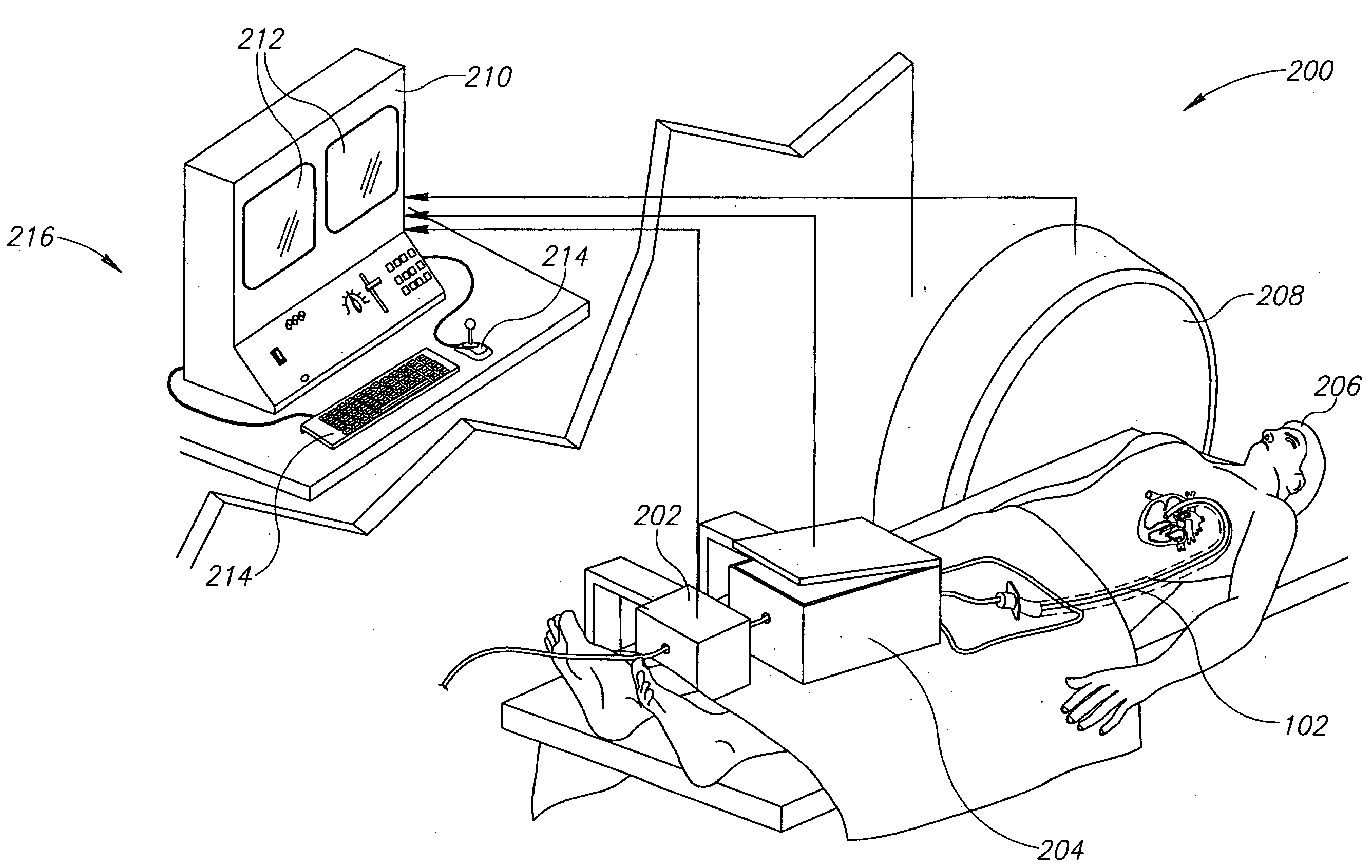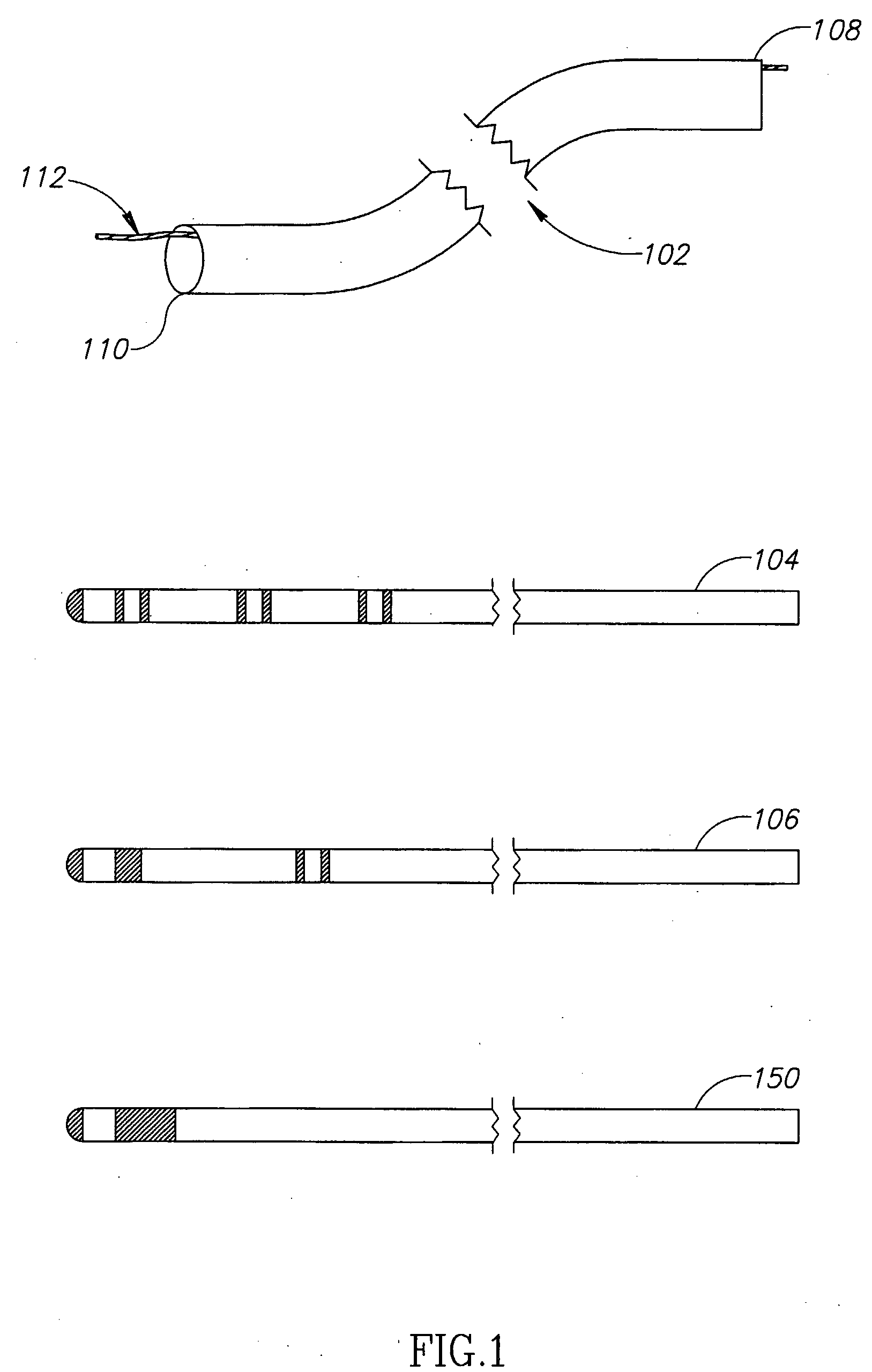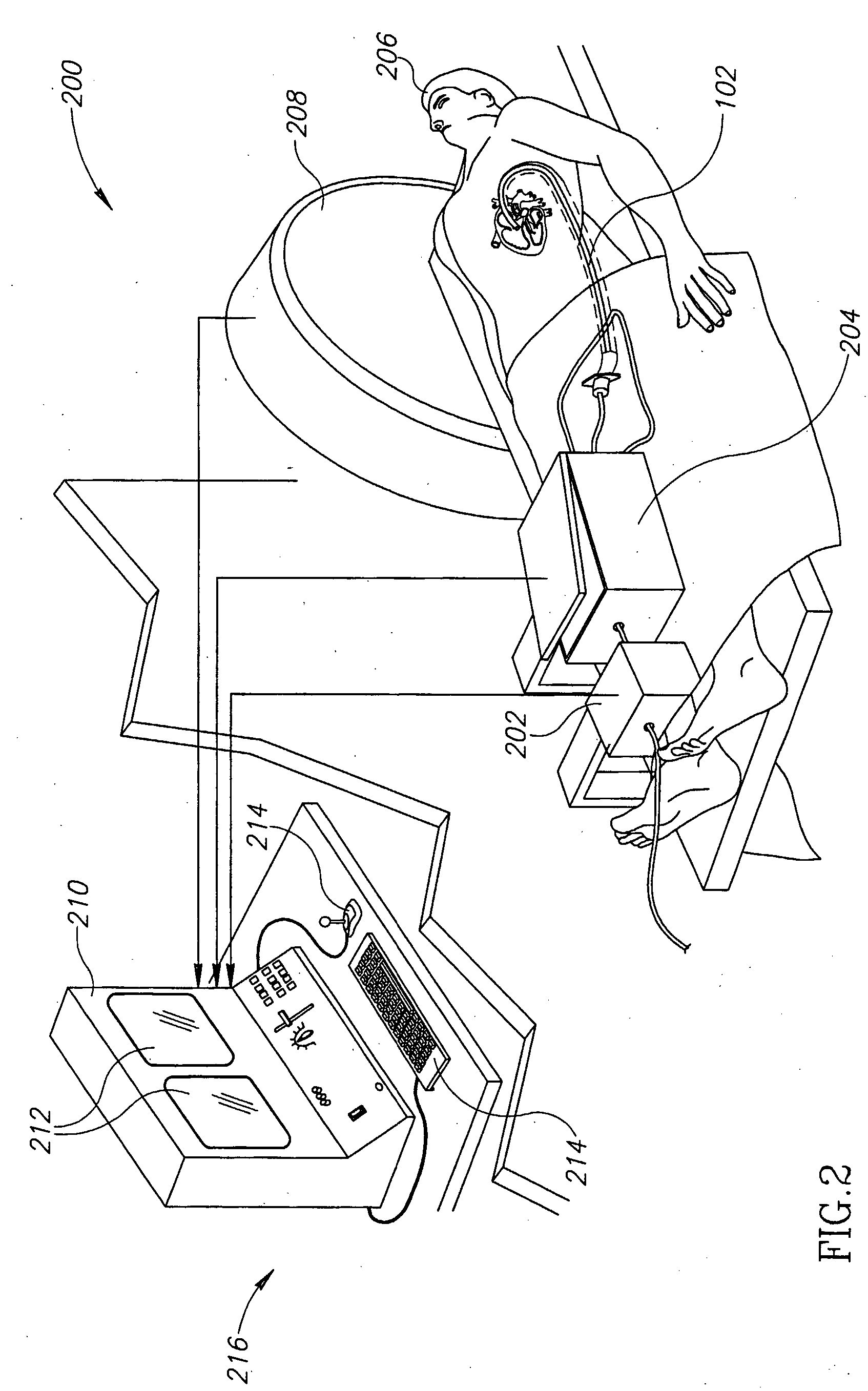Methods and apparatuses for treatment of hollow organs
a technology organs, applied in the field of methods and apparatuses for treating hollow organs, can solve the problems of time-consuming and labor-intensive hand-held procedures, inability to really be suitable for hollow organs, and inherently dangerous procedures, so as to reduce the time for cardiovascular mapping and/or ablating procedures, the effect of reducing the tim
- Summary
- Abstract
- Description
- Claims
- Application Information
AI Technical Summary
Benefits of technology
Problems solved by technology
Method used
Image
Examples
Embodiment Construction
Overview of Exemplary Instruments Used
[0023]Referring now to FIG. 1, a guide catheter 102 used in an exemplary embodiment of the invention is shown. Optionally, guide catheter 102 is not used. Optionally, guide catheter 102 is used in combination with a mapping 104 and / or ablative 106 instrument and / or pacing instrument 150. Optionally, any or all of the mapping, pacing and ablation fuictions are performed by the same instrument. In some embodiments of the invention, instruments are inserted through the guide catheter 102 to a desired location within the patient 206, said patient depicted in FIG. 2. A tip which is used for mapping 104 and / or ablating 106 and / or stimulating a desired location is maneuvered to a distal end 108 of the guide catheter 102. In some exemplary embodiments of the invention, instrument operation occurs while in transit in guide catheter 102. Optionally, instruments operate while in transit when there is no guide catheter 102. Optionally, instrument operation ...
PUM
 Login to View More
Login to View More Abstract
Description
Claims
Application Information
 Login to View More
Login to View More - R&D
- Intellectual Property
- Life Sciences
- Materials
- Tech Scout
- Unparalleled Data Quality
- Higher Quality Content
- 60% Fewer Hallucinations
Browse by: Latest US Patents, China's latest patents, Technical Efficacy Thesaurus, Application Domain, Technology Topic, Popular Technical Reports.
© 2025 PatSnap. All rights reserved.Legal|Privacy policy|Modern Slavery Act Transparency Statement|Sitemap|About US| Contact US: help@patsnap.com



